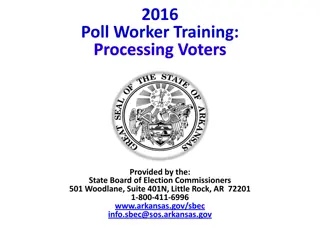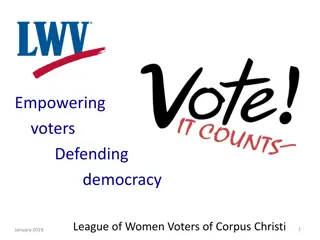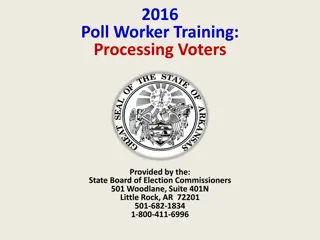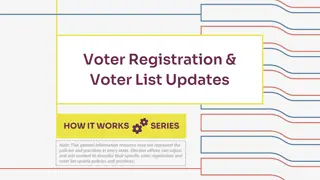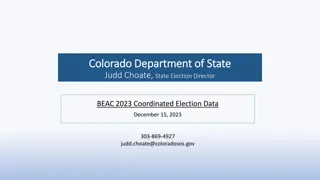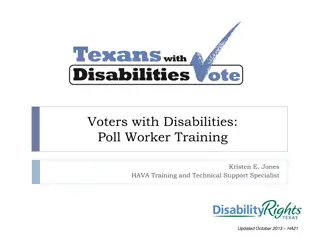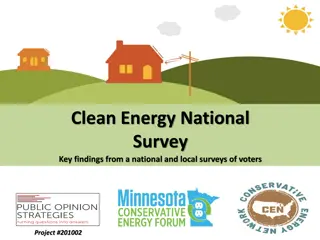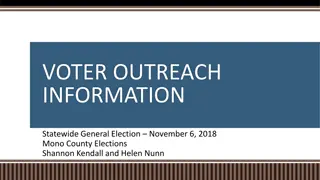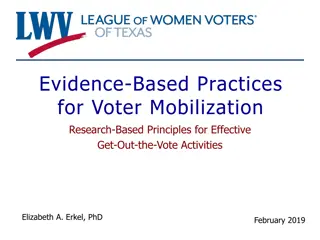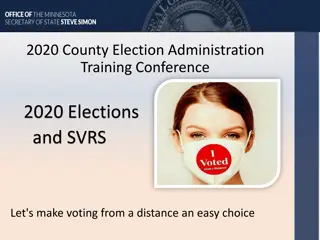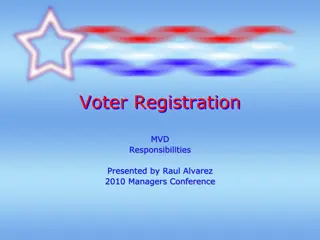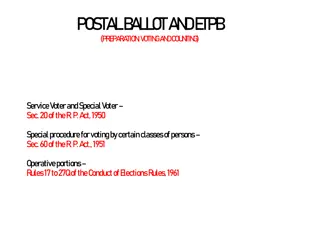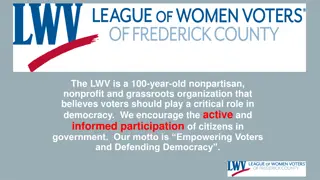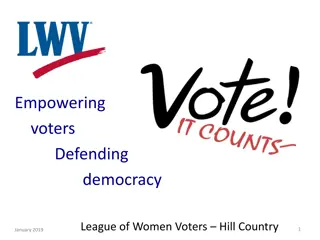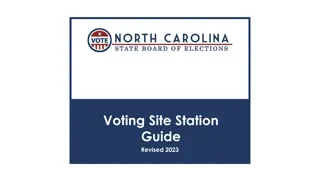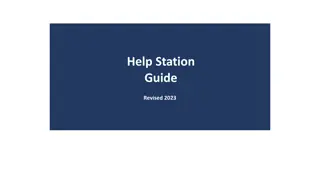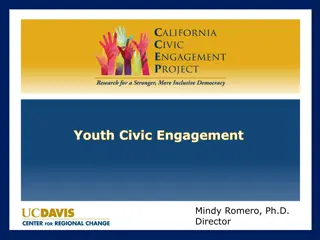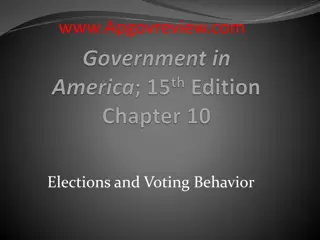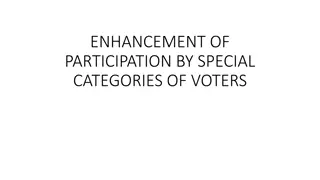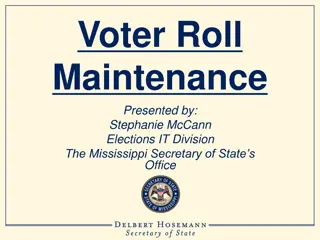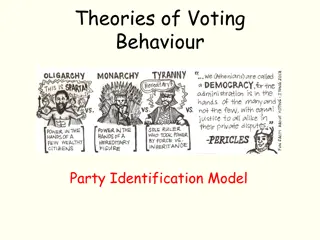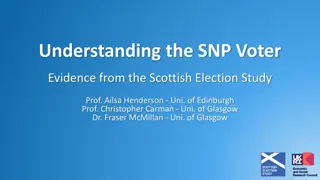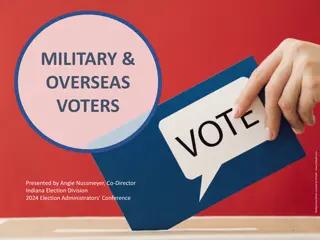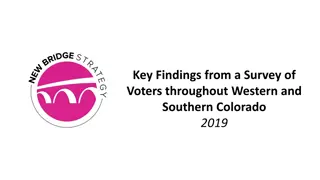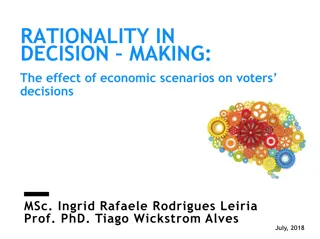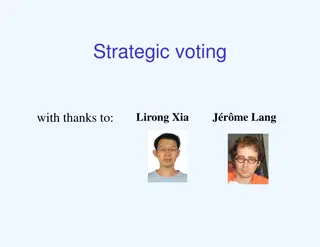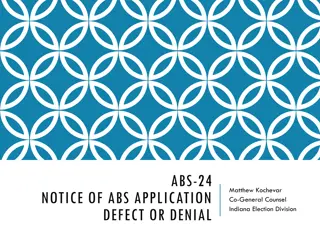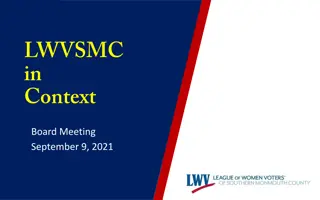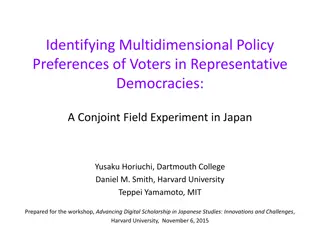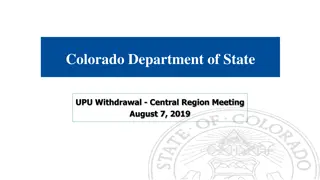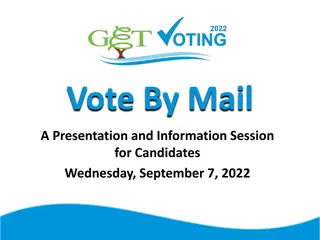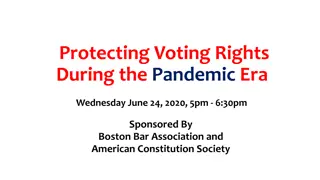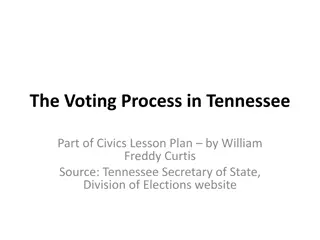Understanding Voters and Voter Behavior: a Historical Perspective
Explore the evolution of suffrage rights, voter qualifications, and historical restrictions on voting based on factors like race, gender, and property ownership. Learn about key amendments that expanded voting rights and the importance of citizenship, residence, and age in determining eligibility to vote.
Uploaded on Oct 05, 2024 | 0 Views
Download Presentation

Please find below an Image/Link to download the presentation.
The content on the website is provided AS IS for your information and personal use only. It may not be sold, licensed, or shared on other websites without obtaining consent from the author. Download presentation by click this link. If you encounter any issues during the download, it is possible that the publisher has removed the file from their server.
E N D
Presentation Transcript
Suffrage the right to vote (a.k.a. franchise) Electorate the potential voting population Disenfranchised citizens denied the right to vote Poll Tax a tax imposed as a qualification for voting Aliens foreign-born residents who have not become citizens Transients persons who plan to live in a state for only a short time Registration a procedure of voter identification Purging the removal of names of those who are no longer eligible to vote Poll Books the official lists of qualified voters
Literacy a persons ability to read and write Gerrymandering the practice of drawing electoral lines in order to limit the voting strength of a particular group or party. Injunction a court order that either compels or restrains the performance of some act by a private individual or public official. Preclearance the act of allowing new election laws
Generally restricted to white landowning males only. Restrictions on the right to vote were typically because of religious belief, property ownership, tax payment, race, and gender.
1. Eliminate the religious requirements from the colonial times early 1800s 2. 15thAmendment intended to protect any citizen from being denied the right to vote because of race or color 3. 19thAmendment people couldn t be denied the right to vote because of their sex. 4. during the 1960s African Americans were given the right to vote in all states. (Amendments 23,24) 5. 1971 26thAmenedment
Every state requires that any person who wants to vote must be able to satisfy qualifications based on 3 factors: citizenship, residence, and age. You must be a legal resident in the state in which you cast a ballot. No state can set the voting age at more than 18 but any state can lower the age to under 18 if they choose to do so.
Protected by the Civil Rights Act of 1957 which created the United States Commission on Civil Rights and also gave the attorney general the power to seek federal court orders to prevent interference with any person s right to vote in any federal election. Also protected by the Civil Rights Act of 1960 which added the safeguard of federal voting referees.
Most effective because it outlaws discrimination in several areas especially in job-related matters and, in regards to voting, it forbids the use of any voter registration or literacy requirement in an unfair or discriminatory manner.
Applied to all elections throughout the country (state, local, & federal) and made the 15th Amendment a truly effective part of the Constitution.



